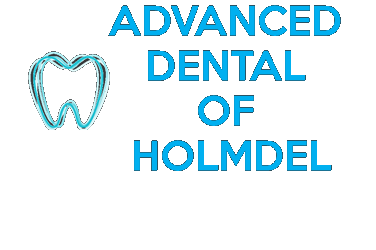 If you’re not satisfied with your smile, modern cosmetic dentistry can help. This method of professional oral care focuses on improving the appearance of your mouth, teeth, gums, and overall smile. Common procedures include teeth whitening, veneers, fillings, and implants.
If you’re not satisfied with your smile, modern cosmetic dentistry can help. This method of professional oral care focuses on improving the appearance of your mouth, teeth, gums, and overall smile. Common procedures include teeth whitening, veneers, fillings, and implants.
Cosmetic dentistry offers a variety of procedures — from minor fixes to major surgeries. Below are some of the cosmetic procedures we offer at Advanced Dental of Holmdel.
Tooth Colored Fillings
Tooth-colored fillings offer strong, natural-looking treatment options for cavities and
decay. Tooth-colored fillings, also known as white fillings or composite fillings, solve both of
those problems. By using a safe composite resin material to fill the cavity, these treatments
provide the treated tooth with solid support that is less likely to come loose, in addition to having a natural appearance that blends in with your teeth. Tooth-colored fillings can be performed inpatients of all ages, and they can also be used to replace metal fillings you may have had for years. A filling is used to treat a cavity in a tooth. Cavities form when plaque (a combination of food residue and bacteria) builds up on a tooth and eats away at the enamel causing a small indentation or hole. When cavities are detected early and filled, it can prevent the cavity from getting deeper and causing further problems.
Zoom Teeth Whitening
Zoom Teeth whitening can provide a dramatic difference in a short amount of time.
Teeth whitening is a quick and convenient way to brighten up the teeth for an overall more
attractive and youthful-looking smile. It is relatively painless and can be repeated every so often
to maintain the results. Zoom teeth whitening can lighten patients teeth by as much as 12
shades in one visit.
Cosmetic Bonding
Cosmetic bonding is the process of applying a tooth-colored composite material to improve
the appearance of a tooth. This process improves the aesthetics of your smile while allowing the tooth to maintain a natural appearance. In order to bond a tooth, tooth colored material is added to the tooth to build it up. Cosmetic bonding is most commonly used to correct cracked teeth, stains and discoloration, gaps between two teeth, chips, malformed teeth, and teeth that are uneven in size.
Porcelain Veneers
Porcelain Veneers are appropriate for individuals who want to conceal superficial
dental imperfections, such as: chipped or cracked teeth, stains or discoloration, unevenly sized
or shaped teeth and small spaces between the teeth.
Porcelain veneers are strong, durable and highly resistant to stains. They do not require
extensive preparation or the removal of tooth enamel, nor do they require very much
maintenance after they have been applied. Veneers can last for many years with the proper
care.
Dental Crowns
If a tooth has more extensive decay, a Dental Crown may be the ideal aesthetic and functional
restorative solution. In general, dental crowns candidates are individuals who have extensive
tooth decay/damage, but sufficient remaining tooth structure in order to support the porcelain
restoration. Dental crowns may also be placed during a smile makeover procedure. Individuals
who are missing a tooth or do not have adequate remaining tooth structure should consider
another solution.
Dental Implants
Single Tooth Dental Implants as the name suggests, this procedure is used to replace an
individual tooth. After the titanium implant is placed and the abutment is attached, a crown is
secured as a replacement for the missing tooth. By using materials that match the color of your
remaining teeth, we can create a restoration that looks completely natural.
How do dental implants work?
Dental implants are small anchors made of a biocompatible
metal called titanium that are placed in the jawbone. Dental implants are the replacement of tooth
roots in the mouth. Once placed, the anchors begin to fuse with the bone over the course of a few
months. After the fusing process, known as osseointegration, abutment posts are inserted into
the anchors to allow for the permanent attachment of the replacement teeth.
Dental Bridge
A Dental Bridge may be used to restore an area with one or more adjacent missing teeth. A
bridge has two primary components. The abutments (or supports) for the bridge are created by
placing a crown on either a natural tooth or an implant. The synthetic tooth that replaces the
missing tooth is called a pontic. In the case of one missing tooth, the two teeth on either side will
be prepped for crowns and the missing tooth will be replaced with a synthetic tooth that is
connected to the crowns on either side of the missing tooth.
Reasons to See a Cosmetic Dentist
There are many reasons you might see a cosmetic dentist, including:
- Tooth decay
- Damage (cracks, chips, etc.)
- Crooked teeth
- Misshapen teeth
- Discoloration
- Missing teeth
People with damaged, decaying, crooked, or discolored teeth may also have difficulty when eating and speaking. For others, dental issues may affect their self-esteem.
Many people are reluctant to smile due to conditions of the teeth and mouth. Some adults have cut back on their participation in social activities due to embarrassment about their smiles. If you feel dissatisfied with your smile, a cosmetic dentist can improve the condition of your teeth.
When you select a cosmetic dentist, you are selecting a dental professional who will help you change your appearance by changing the look of your teeth and your smile. It is a very personal and important choice. Most procedures are not reversible, so you will want to take your time, ensure that you feel comfortable. We have the experience to help you achieve your treatment goals and want to be sure you are happy and completely satisfied with the results that are achieved with the treatment you receive.
